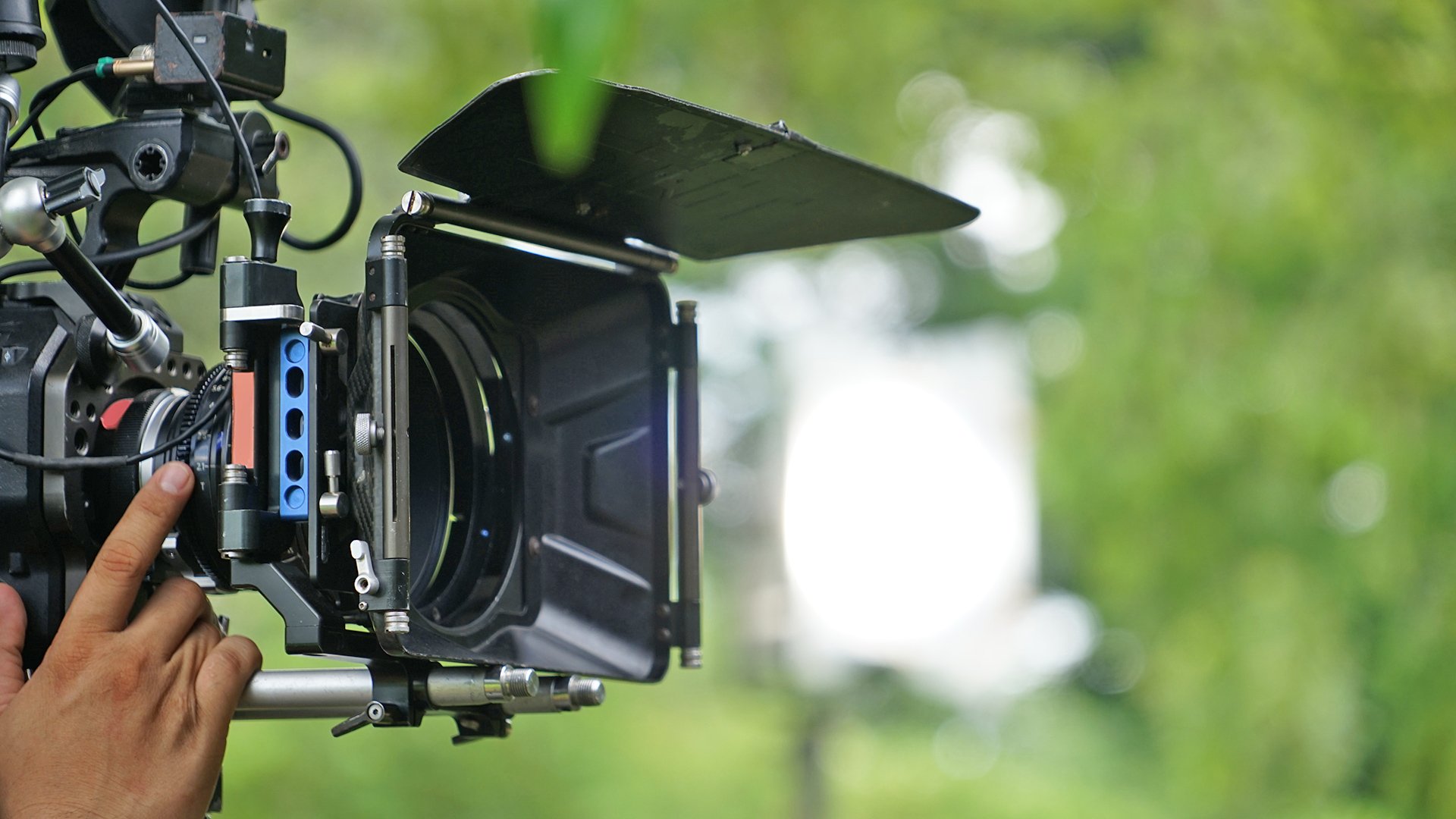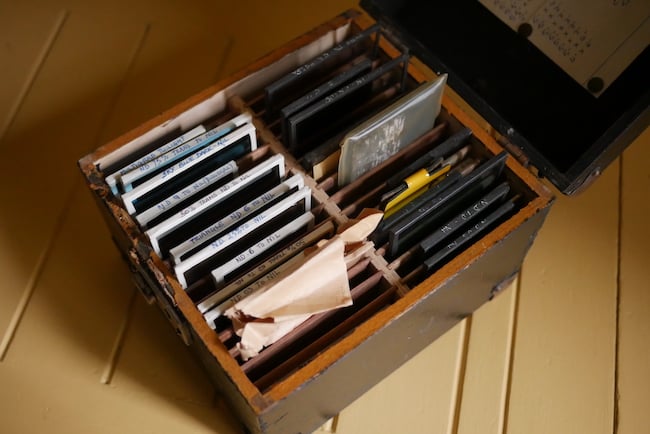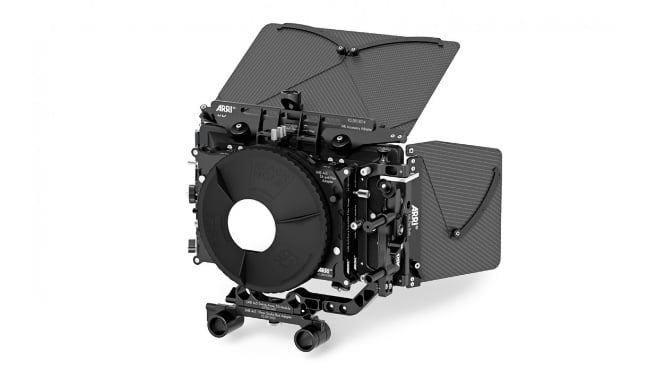
Replay: A fully-fledged matte box is a thing of beauty. But complete, professional matte boxes range from £1000 to £5000 – you can get a decent camera for that. Do you really need one?
Let’s look at the three fundamental functions of a matte box: holding filters, keeping stray light off the lens and looking impressive. Taking those in reverse order:
A matte box looks good on your camera
Not necessarily as vain and trivial as it might seem. Your DSLR/mirrorless camera might look a little too much like the camera your client takes his or her holiday snaps with. No matter how great your end results are, first impressions count. I’ve known sound recordists working on commercials who’ve been told to hire in some more (unnecessary) equipment as the client was coming in and the kit didn’t look impressive enough.
Keeping stray light off the lens
A crucial task which matte boxes perform supremely well, but how often does it take a full matte box to do the job? A lens hood and a French Flag will generally do the trick. A flag can just be a piece of black card and a flexible arm (there is a cheap, lightweight option sold as a Flare Buster – and lightweight is good in this context). Or some Black Wrap can work wonders.
How many filters do you actually need?
Professional video cameras, for decades, have had built-in Neutral Density filters. There is little excuse for video cameras not to have them. But cameras designed primarily as still cameras don’t and other cameras following in their footsteps have dispensed with them, too. But you definitely need NDs, one way or another.
How about grads? Graduated filters are much loved by landscape photographers. They’ve been very useful for cinematographers too, but in the era of shooting log and increased dynamic range, arguably we can do without them. Another obvious difference between the needs of stills and video people is that grads only work with a static camera and, increasingly, our cameras are on the move. Let’s say that grads these days are a low priority for the moving image.
Polarisers. Polas do something you can’t really duplicate in post. Essential for getting rid of unwanted reflections. Also useful for darkening a clear blue sky. You need to have one in your kit, but you probably won’t actually use it that often.
Effects filters. Effects filters go in and out of fashion. Increasingly, we can do a lot of what effects filters do in post with the advantage of saving money and being able to adjust or remove the effect if we don’t like it. Some like to use a very light ProMist to ‘take the edge off’ and there’s nothing wrong with that.
Some people do just like filters — there is a certain appeal in having a box of tricks to give what we shoot a special look — but, to be honest, most of us shooting in the 21st century don’t really need that many. The days when leading DoPs had a stack of three or four filters in front of their lens are long gone.

The cinematographer's box of tricks
The problem with cheap matte boxes
If you want your matte box to accommodate all those kinds of filters, you are going to need multi-stages, with a rotating stage for the polariser and adjustable rectangular filter for the grad. And you’ll probably need rails to mount your matte box on, which, for documentary shooters, might be another accessory to bolt on to your camera. And if you change lenses frequently, you probably want a swing-out matte box so you don’t have to dismantle the rig every time you change lenses.
Now, there are some matte boxes coming out of China for well under a hundred dollars. They come with two or three filter stages and a full set of side and top flags. They may even swing out. They are great value for money but — and this is a big but — they are a bit rough around the edges. Precision engineering doesn’t come cheap, but a matte box that is not smooth and efficient is probably not worth the effort.
Here’s the thing: you want all those stages to move smoothly, you want the filters to stay in place, you don’t want your flags to move. The last thing you want is to be fiddling around with an Allen key tightening things up. You really don’t want bits to drop off. And here we see the problem with cheap matte boxes: they are a pain. They are simple devices, but everything has to line up. When you start to fiddle around, you waste time. And time on a shoot is not only money, but it can also be an embarrassment.
Let’s roll back and see what we really need. Most of the time, most of us don’t really need a whole stack of filters on the lens. When we need one, a screw-in filter or a clip-on filter holder/lens hood will do the trick. We seldom really need a grad and if we really do, we could probably make do with an inexpensive stills filter holder.

An Arri lightweight matte box- full kit around $5000
Sometimes we do really need a matte box
If you’re shooting high-end drama or commercials, you’re probably not reading this because there’s always a matte box on your camera. Even if you’re not a filter freak, there is nothing better to control light spill when you have a complex lighting set up and when you do need a filter, it’s a quick and easy installation. If you have a full studio kit, even an up-market matte box is a minor expense in context. If, however, you are shooting documentaries or fast-and-loose drama, it may well be the last thing you need.
tl;dr
- Professional matte boxes can be expensive, with prices ranging from $1000 to $5000, making it essential to consider whether you truly need one for your shooting needs.
- While matte boxes enhance the appearance of your camera setup, they are not always necessary for blocking stray light; alternatives like lens hoods, French Flags, or cheap materials like Black Wrap can often suffice.
- Although filters have their uses, the necessity for multiple types, such as graduated filters, has diminished with advancements in camera technology and post-production capabilities, making a simpler approach more practical for many cinematographers.
- Low-cost matte boxes may offer good value but often lack the precision and smooth operation of professional models, leading to potential frustrations on set; in many cases, simpler solutions like screw-in filters or basic filter holders may be all that's needed.
Tags: Production


Comments